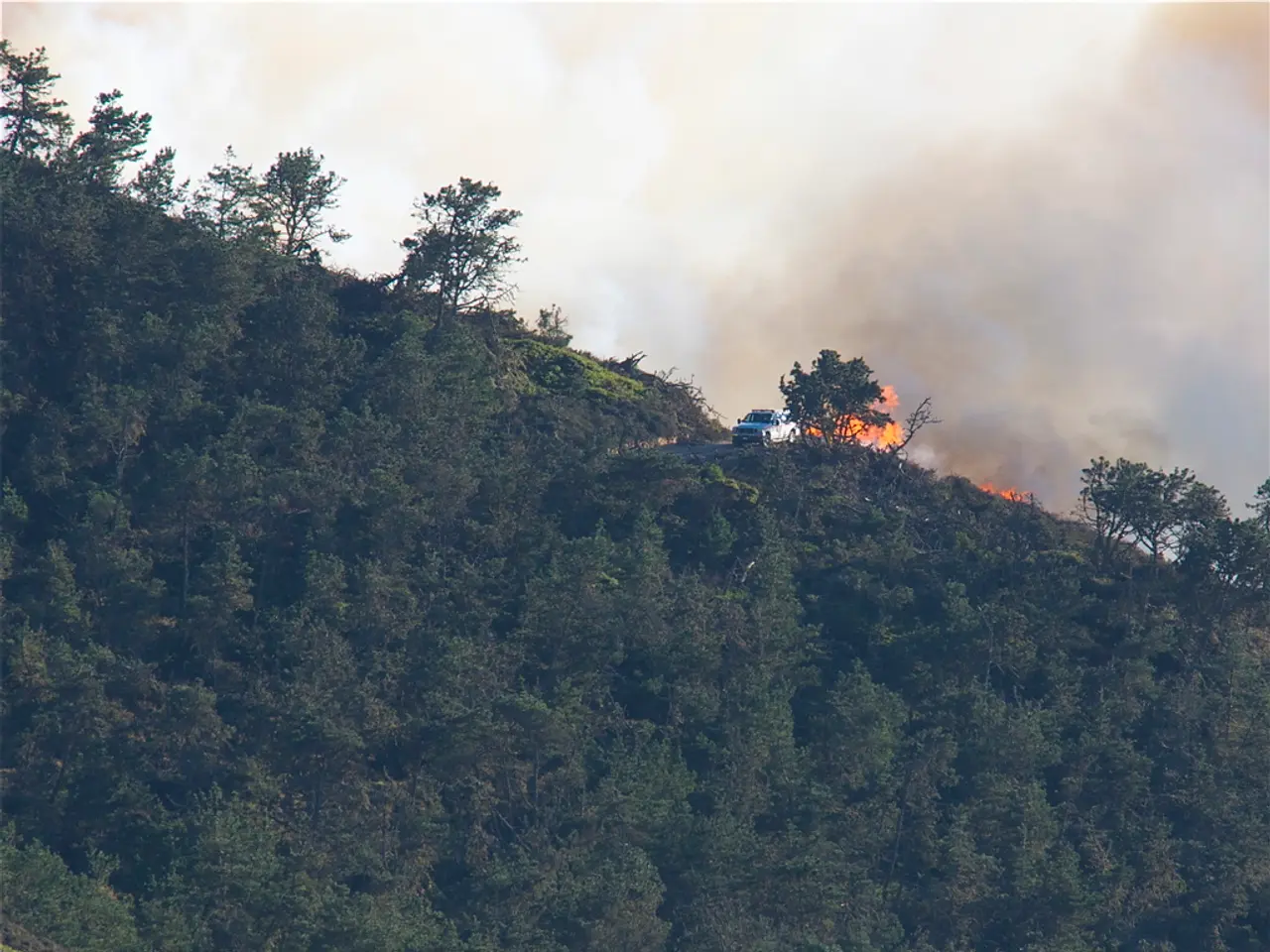Southern European and Turkish fires begin to subside, temperature levels ascend
Wildfires have been ravaging Southern Europe and Turkey, with the region experiencing a surge in blazes this season. In Italy alone, over 3,700 fires were registered between May and the end of July, according to a report from the local forestry authority. Turkey, too, has seen more than 2,000 wildfires break out so far this year, as per the Ministry of Forestry and Environment.
The fires in these regions are primarily caused by a combination of human activities and climate-related factors. Nearly 90% of wildfires in Turkey and similar Mediterranean climates result from human actions such as discarded cigarettes, open flames, and arson. Environmental conditions fueling these fires include unseasonably high temperatures, dry conditions, and strong winds. Turkey recently experienced record temperatures up to 50.5°C (122.9°F), which significantly worsen wildfire risks.
These wildfires have grown into "mega-fires," defined as fires burning 40,000 hectares or more. These mega-fires often occur along the interface between human settlements and wildlife areas, threatening both natural ecosystems and communities. For example, the 2025 Manavgat Fire in Turkey destroyed extensive forest areas and impacted critical infrastructure such as the Oymapınar Dam.
Management of these wildfires has involved large-scale evacuations and the deployment of substantial firefighting resources. In Turkey’s Bursa region, over 1,100 firefighters battled flames while approximately 1,765 people were evacuated from threatened villages. Authorities have been actively monitoring weather conditions like wind shifts that can aid firefighting efforts. Additionally, law enforcement has detained arson suspects, reflecting efforts to combat human-induced causes.
The response also includes preventative strategies informed by recent mega-fires, emphasizing coordinated fire prevention, rapid response, and protection of critical natural and human land assets.
In Southern Europe, wildfire management faces challenges from extended fire seasons and shifting fire patterns linked to climate change. The European Union recorded hundreds of thousands of hectares burned in recent years, especially impacting protected areas. Geopolitical factors such as conflicts have also influenced fire spread, notably in Ukraine.
Despite recent rainfall in many places, the wildfire risk remains high in Greece and Italy. The Greek fire service is on high alert due to expected windy conditions in the coming days, which can significantly hinder extinguishing efforts. High temperatures and dry winds can contribute to small negligences, arson, or a lightning strike developing into fires that are difficult to control.
In Portugal and Spain, over 70,000 hectares of forest, bush, and farmland have been destroyed by fires since the beginning of the year. Several fires also had to be extinguished on Sardinia this week in Italy. Isolated fires were reported in the rural regions of Thrace and Izmir in Turkey, but they were quickly extinguished.
The wildfire near Ponte da Barca, Portugal, is still challenging, despite being almost under control. Elisio Oliveira, head of civil protection in Portugal, has warned about an upcoming heatwave with temperatures over 40 degrees Celsius. At least 14 people, including firefighters, have died in the fires in Turkey.
Despite the ongoing challenges, firefighters have largely contained the wildfires in Southern Europe and Turkey. The wildfires in Turkey have largely been brought under control on Saturday, according to the state news agency Anadolu. The second major wildfire in Las Hurdes, Spain, has also been brought under control. The wildfire in Cuevas del Valle, Spain, was almost extinguished due to unexpected rain.
However, the situation remains tense in Italy, particularly in the south of the country, with the island of Sicily being particularly affected. The wildfire risk remains extremely high in the south of the island of Euboea, the east of Crete, and the region around Athens in Greece. A second large fire near the Portuguese town of Arouca has also been brought under control.
In summary, wildfires in Southern Europe and Turkey stem from human activity exacerbated by climate change-driven weather extremes. Management efforts focus on rapid firefighting mobilization, evacuations, and targeting human causes to mitigate these increasingly frequent and severe fires. Despite recent successes in containing the fires, the risk remains high, and vigilance and preventative strategies will be crucial in the coming months.
- Climate-related factors, such as unseasonably high temperatures and dry conditions, contribute to the surge in wildfires in Southern Europe and Turkey by fueling environmental conditions.
- In Mediterranean climates like Turkey, nearly 90% of wildfires are caused by human activities, with discarded cigarettes, open flames, and arson being significant factors.
- Weather-forecasting plays a crucial role in wildfire management, as authorities monitor weather conditions like wind shifts to aid firefighting efforts.
- According to the report, over 3,700 fires were registered in Italy between May and the end of July alone, while Turkey has seen more than 2,000 wildfires break out this year.
- Efforts to combat human-induced wildfires include the detention of arson suspects, emphasizing the need to address the role of human actions in these disasters.








